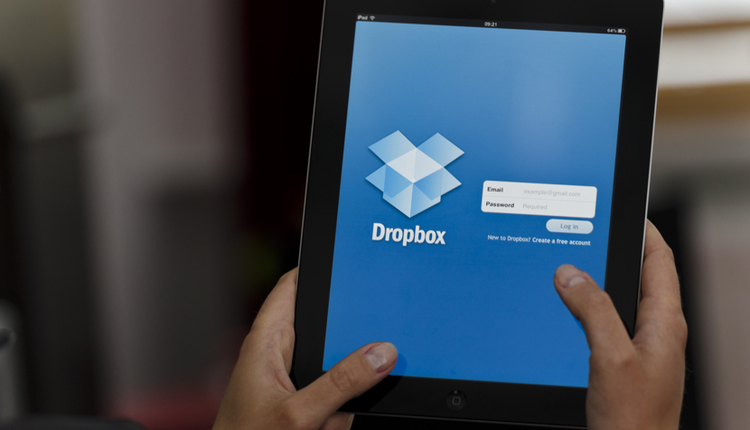
Image by: Butsaya, ©2017 Getty Images
April was a busy month for content and workflow technology vendors, with new partnerships, product redesigns, new integration, and, possibly, new ownership. Today, we review a few interesting developments.
Iron Mountain Expands its Portfolio with Content Workflow
On April 6, 2017, Iron Mountain, in partnership with Hyland Software, introduced Iron Mountain Workflow Automation powered by Hyland, a set of solutions that digitize, automate, and transform content-intensive workflows. Iron Mountain also announced that the Digital Record Center will now be powered by Hyland in most instances. The Digital Record Center is a simple repository that customers can use to store, search, and control access to their electronic information. The solutions are intended to enable organizations to efficiently convert paper-based workflows to digital, saving time, reducing costs, and providing greater accuracy, auditability, and security to meet current and future compliance requirements.As we see continued expansion in the volume and types of digital information assets that must be managed by an organization, the ever-increasing popularity of file synchronization and sharing solutions hosted in a public cloud and the growing role of mobile devices in conducting business, information governance becomes increasingly complex. Iron Mountain is in a unique position to assist organizations with both workflow automation and information governance initiatives, as the two are inextricably intertwined.
Xerox Rearchitects DocuShare
On April 20, 2017, Xerox announced the release of its new cloud-based DocuShare platform, DocuShare Flex, targeting the small- and medium-sized business (SMB) market. The product is intended to be cost-effective for businesses with as few as five employees but can be scaled to support thousands of users. Customers can add capacity and users incrementally. In addition to standard enterprise content management (ECM) functionality, DocuShare Flex provides out-of-the-box capabilities to streamline common document-intensive workflows. The fully cloud-based, software-as-a-service (SaaS) solution was rebuilt from the ground up using open web and platform standards.We believe that moving DocuShare to a more modern architecture makes good sense. In addition, a key part of Xerox’s growth strategy is to achieve greater penetration into the SMB market via its partner network, and the move to a SaaS architecture makes the solution more accessible to both partners and smaller businesses. The solution also fits well with Xerox’s recent launch of ConnectKey-enabled devices. Xerox’s challenge will be with reaching market segments outside of its existing partner network and installed base of Xerox devices in a competitive environment.
Kofax Hosts Customers and Partners Amid Uncertainty
On April 23-26, 2017, Kofax hosted customers, partners, and analysts at its Kofax Inspire event in Nashville, Tennessee. This was the second event that brought together Perceptive Software, Lexmark Software, and Kofax customers, but it was the first “unified” event under the umbrella of the Kofax brand.Last November, it was announced that Apex Technology, the Chinese company that had acquired Lexmark, would sell off the company’s Enterprise Software group, a collection of more than 14 acquisitions including Perceptive Software, ReadSoft, and Kofax (which had made a number of acquisitions itself). Since that time, the business unit has been functioning as an independent entity under the Kofax brand. It is important to note that the “new” Kofax is quite different from the former company, as it now includes in its portfolio all the other software assets that Lexmark acquired over its six-year software spending spree. Within that portfolio are essentially all the tools required to effectively manage content-intensive business workflows across a variety of functions and industries.
Though no official announcement of new ownership was made at the Nashville event, there was no sign of Lexmark except on an occasional out-of-date business card. It was announced at the event that the Kofax brand would be attached to all products going forward.
On May 3, 2017, private equity firm Thoma Bravo, the parent company of Hyland Software, announced its intent to purchase Lexmark's Enterprise Software Division. No terms were disclosed, but the deal is expected to close in the third quarter of this year.
Thoma Bravo has more than two dozen companies in its portfolio, ranging from cybersecurity to solar energy, and has more than one company in several markets. So, the addition of Kofax to the portfolio makes sense. According to the announcement, the purchased entities will be broken up, with the Kofax and ReadSoft businesses forming a new, independent entity under the Kofax name, while the Perceptive Software business will be sold to Hyland.
In our view, this is a unique situation where all parties come out ahead. Both Kofax and Hyland benefit from adding key technologies to their offerings, as well as from the stability of a parent firm with $17 billion in capital investment. In particular, Hyland gets some new technology assets for its healthcare portfolio, which can build on its existing presence in that market. There is still some overlap with the Perceptive content management and Hyland's core ECM suite, and we'll have to see how that plays out, but that is a much smaller challenge to solve than if the firm had needed to absorb the entire acquisition.
As for Kofax, the company is now on a firm foundation after more than two years of speculation about its future. It is rare for a company to go through two acquisitions and come out whole, but with this transaction, the firm is well-positioned to execute on its vision for the market.
OpenText Replatforms CCM with OpenText 16 Enhancement Pack 2
On May 3, 2017, OpenText announced OpenText 16 Enhancement Pack 2 (EP2), with a collection of major enhancements and improved integration for the entire Customer Experience Management suite and a major shift in product strategy for customer communications management (CCM). OpenText 16 EP2 represents a major step forward in the integration of software assets acquired from HP Software in 2016. The recently acquired products in web content management, digital asset management, CCM, forms, and correspondence management have all been integrated into a comprehensive offering that is united with context-sensitive analytics, reporting, and monitoring.For CCM, the company's three primary products—OpenText Communications Center Enterprise (StreamServe), OpenText Communications Center CRM (PowerDocs), and OpenText Exstream—have been combined into OpenText Exstream Release 16.2.
This new release will take advantage of Exstream's high-throughput engine and interactive editing capabilities while retaining the StreamServe engine for its robust batch transaction capabilities and mature integration ecosystem. Flexible, cloud-based correspondence management and Salesforce integration are provided by PowerDocs. Upgrading to the new platform does not require template redesign or migration. The combined platform is enhanced by sharing content across OpenText content repositories, shared monitoring tools, shared directory services for controlling access, and connections to the OpenText Business Network for operational alerts and messages.
With EP2, OpenText has placed itself firmly in the customer communications platform arena by combining all the major components of CCM with a suite of digital media, content, and customer experience offerings that position it well for the future.
Holly Muscolino is the Research Vice President of the Content Technologies and Document Workflow group at IDC and is responsible for research related to enterprise content management, including records management and case management. Follow Holly on Twitter @hmuscolino.
Terry Frazier is the Research Director of Digital Content Technologies in IDC’s Analytics and Information Management practice. He leads research into enterprise content management (ECM), file synch and share (EFSS), digital signature technologies (e-Sign), and customer communications management (CCM). Follow him on Twitter @ThinkandCompete.






![IDC graphics for Document Strategy[2]](https://cms-static.wehaacdn.com/documentmedia-com/images/IDC-graphics-for-Document-Strategy-2-.2474.widea.0.jpg)









